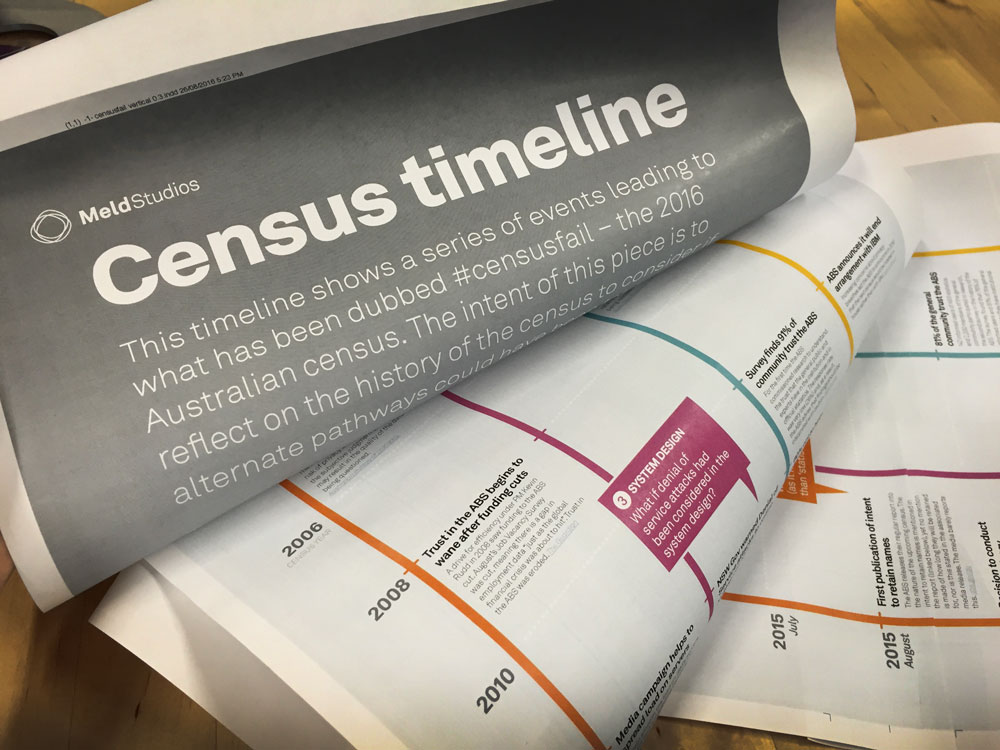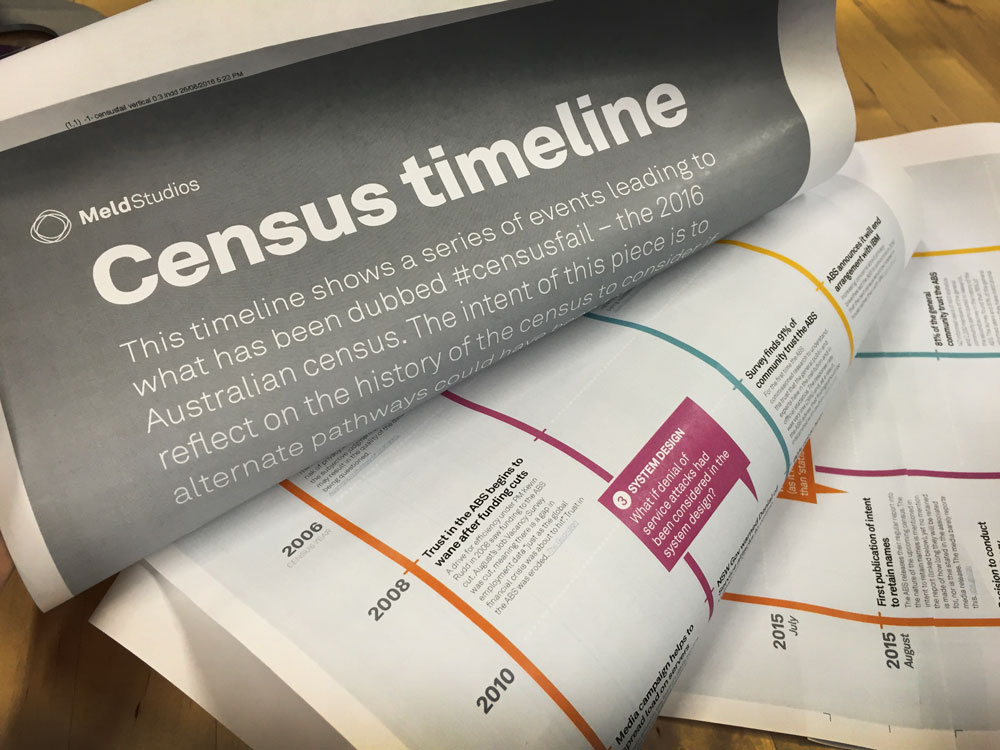#Censusfail – a timeline

The 2016 Australian census was nothing if not controversial. For those outside Australia, most of the controversy relates to whether the names and addresses of the public should be retained along with the statistical data. Previously, unless you had specified you wanted your name kept for “posterity”, the forms would have been guillotined after they were processed (here’s the guillotine tender).
In 2015, however, the Australian Bureau of Statistics (ABS) decided—without much public consultation—that it would keep the link to names indefinitely. It was not until the census was imminent that the privacy implications of this decision began to be publicly debated.
Many decisions were made in the lead up to the census which, I believe, has led to an erosion of trust in a previously highly regarded institution (in 2015, over 80% of the public surveyed said they had trust in the ABS). This timeline outlines these decisions and raises a few questions about places where alternate pathways could have been taken. I invite you to comment on the 'What ifs' I've listed below and on the timeline.
DOWNLOAD THE TIMELINE
WHAT IF…
As part of our work at Meld Studios we often use “what if” statements to spark the generation of idea. Questions framed this way encourage people to imagine the future differently. Typically we ask questions regarding operating rhythms or ways of working, but with this timeline the ‘what if’ questions focus on certain points where a different path might have been taken in the lead up to the 2016 census.
I recognise that the benefit of hindsight is that these ‘forks in the road’—the points at which a divergent path could have been taken—are more obvious than they would have been at the time. Yet there are a few places where past events could (or should) have led to an alternate decision being made. It is at these points where many of the ‘what if’ questions are asked.
1. What if more time was spent understanding the privacy concerns of the public?
Ahead of the 1976 census, where many new questions were to be asked, the Law Reform Commission recommended the ABS undertake a publicity campaign to help alleviate concerns around privacy. Budget cuts meant that this campaign was not run and there was subsequently much negative publicity. Given the increase of concerns around online privacy leading up to the 2016 census, should the department and government spent more time to understand public concerns around the gathering of statistical data and worked to alleviate them? How could this have been handled better?
2. What if name retention remained optional as in previous years?
Historically, names and addresses collected as part of the census were destroyed as soon as the papers had been processed. From 2001 to 2011 the public were given the option of having their name retained by the national archives to enable them to understand greater trends in the population. Interestingly, in both the 2001 and 2011 census, this option was taken up by over 50% of the population. With such a high response rate, what if it had remained optional?
3. What if knowledge about denial of service attacks had been better considered in the design of the 2016 system?
In 2011, as the NSW government was considering a move to online voting, it was warned about the possibility of denial of service attacks being launched from inside Australia. Assuming the federal government and ABS were across this information, should they have taken more heed of these warnings and included safeguards for this in the design of the online census site?
4. What if there’d been a department head for the entirety of 2014?
The year of 2014 was a year of big decisions for the Bureau in terms of 2016 census planning. For example, IBM was granted a $9.6 million contract to host the census website (despite the ABS saying in 2011 that it would be hosted internally). Given the gravity of this decision, and the criticality of this planning year, would things have been different with someone permanent at the helm?
5. What if the word ‘posterity’ was listed as a core benefit rather than ‘statistical efficiency?
In 2001 a campaign urged the public to opt in to name retention because of the chance to have their name recorded for ‘posterity’. The word ‘posterity’ is powerful as it focuses on the value to the public and urges them to “do their bit” for society. Compare this to the feeling one gets from ‘statistical efficiency’. This is department-centered and focuses only on government benefits. What if the choice of words had been different?
6. What if people had been asked to access the site at different times to better balance load on the site? 2016 census?
There have been many pieces from technical gurus on various aspects of the system design, but one thing I don’t understand, is why the department didn’t seem to sufficiently consider that there would be a HUGE amount of people online after dinner on census night? Especially given that the a lot of people thought they could only fill out the form the night of August 9.
What would have happened if the load have been better balanced?
7. What if before the census went to tender there’d been a ‘Hackfest’ to better understand technical requirements?
Following the census, two university students taking part in a ‘Hackfest’ put together a more robust census site in just over 50 hours and for only $500. They’ve dubbed this “Make Census Great Again”, and the site has been load tested and has passed the parameters of the official census site was subjected to. If two students could do this in a weekend, why not do Hackfests more often, especially ahead of large contracts to gather requirements?
I invite you to add comments and answer some of these 'What If' questions.
A note on my sources
The data in this timeline has been gathered from a range of media sources and the Australian Bureau of Statistics. Many journalists have published more in-depth and expert opinions on this situation and I encourage you to read them. In particular I recommend reading Peter Martin’s pieces in The Age as well as a great post from Justin Warren on Eigen. All referenced articles and papers are linked from the PDF.

